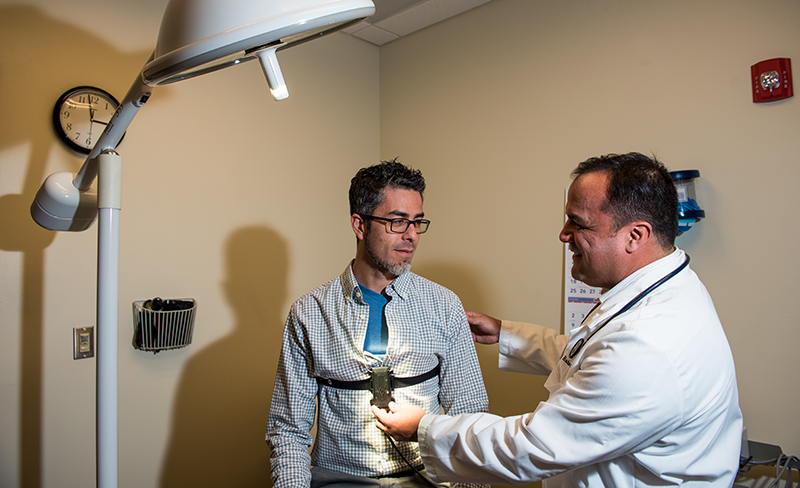
A first responder’s job is strenuous enough, but when mass casualty incidents such as shootings, multiple car pili ups and earthquakes occur, first responders can easily be overwhelmed by the sheer number of victims. Monitoring all the victims in a situation like this can be very difficult. Researchers at the U.S. Department of Energy’s Pacific Northwest National Laboratory developed a stick-on sensor that measures and tracks a patient’s vital signs to help first responders quickly triage, treat and transport the injured.
Related CommandWear Wearable Technology Helps Save Lives While Also Keeping First Responders Safe
The wearable device called VitalTag is a patent-pending low-cost suite of sensors that detects, monitors and wirelessly transmits vital signs, including blood pressure, heart rate, respiration rate and other metrics such as blood oxygen levels, shock index and data from a single-lead electrocardiogram, reports Pacific Northwest National Laboratory.
VitalTag adheres to a patient’s sternum and connects seamlessly via Wi-Fi to securely transmit patient data to a mobile device or laptop in real time. Responders can view each patient’s medical status and location on an incident map. And, should vital signs change for the worse, the system can also send an alert. This comprehensive view could enable emergency medical technicians and paramedics to tend to more patients faster, armed with more detail than ever before.
VitalTag was developed as part of a broad Department of Homeland Security Science and Technology Directorate program called the Responder Technology Alliance. RTA, which is managed by PNNL, helps to advance the development of emerging technologies critical to the responder community.

“First responders told us they need a device to continuously monitor patients in demanding environmental conditions,” said Grant Tietje, a former first responder who manages RTA at PNNL. “VitalTag provides a wearable, cost-effective health monitoring solution.”
PNNL data scientist Luke Gosink and his team developed machine learning algorithms to interact with sensor hardware and created an intuitive user interface that helps first responder do more.
Related Samsung Delivers First Computer Aided Dispatch Solution with Galaxy Smartwatches
“It is a resource multiplier,” said Gosink. “Yes, ambulances have these types of equipment but usually only a few of each. With VitalTag, many more patients can be monitored simultaneously and continuously. More situational awareness, like that achieved with VitalTag, can result in better patient outcomes.”
PNNL is looking for partners interested in licensing the patent-pending technology, which is versatile and adaptable to a wide-range of applications including monitoring:
- High-performance athletes during training
- Military warfighters
- Medically vulnerable populations during evacuations of healthcare facilities
- Veterinary medicine











